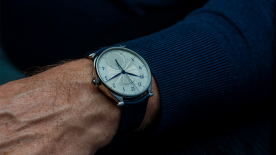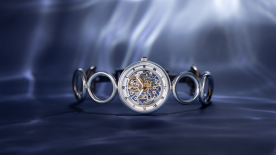In 2009 Patek Philippe ended their 122 year relationship with the Geneva Seal. At that time the seal had become an antiquated certification content with only geographic location and finishing techniques. With the watchmaking world moving ever forward it seemed as if standards of old were being left in the dust with new, stringent requirements taking over. But in 2012 the Geneva Seal requirements were updated to be far more strict and relevant for our time. With these upgrades the question is raised, which is superior?
The Geneva Seal
The Geneva Seal still requires the watch to made in Geneva and it must adhere to a strict standard of finishing. This includes baseplates, bridges, jewels, screws and train wheels with these parts to have all machine marks removed and to be aesthetically pleasing and decorative. The certification also now requires functional tests to be performed. A test of all the watch’s functions is carried out to ensure correct running. Checks are performed on parts ensuring things such as the calendar jumps correctly, minute repeaters function as intended, chronograph complications work correctly and so on.
Water resistance is also a factor now considered, watches receiving the seal must pass a minimum 3 bar test. In terms of precision, after seven days the watch must have shown a variation in rate of less than one minute. The power reserve is tested to make sure that it does indeed meet the minimum guaranteed figure.
Patek Philippe Seal
The Patek Philippe Seal not only includes the movement, but the case, dial, hands, pusher and spring bars. They have taken the certification to a new level requiring every component to live up to a strict code. Plates and bridges are chamfered with mirror polished edges. Visible sides of bridges are Geneva striped and inner sides are circular grained. Patek Philippe have set up a number of committees to ensure the standards of excellence are enforced and carried out on all models.
Similar to the Geneva Seal, Patek Philippe state that functional aspects of finished watches must be tested.
The rate of the watch is tested once the calibers have been cased. Calibers in excess of 20mm must be accurate to -3 / +2 seconds over 24 hours and watches smaller than 20mm must not exceed -5 / +4 seconds in the same time. Calibers equipped with a tourbillon must have an accuracy of -2 / +1 seconds in 24 hours.
The Patek Philippe Seal does not specifically mention waterproofing or power reserve checks but we can safely assume that all watches are tested to ensure accuracy and reliability.
The seal covers the quality of all materials used with all alloys and stones being of the highest quality, without compromise. All diamonds must be flawless white Top Wesselton (G color) grades.
Cases must not have sharp edges or protruding stones which could cause scratches.
Of utmost importance to the certification is reliability. Under no circumstances must it be compromised, all finishing must be undertaken in accordance with this underlying principle.
Conclusion
Indeed, the Geneva Seal requirements have been strictly updated and are much more in line with modern watchmaking, yet the Patek Philippe Seal is still steps above and will be for the foreseeable future.




